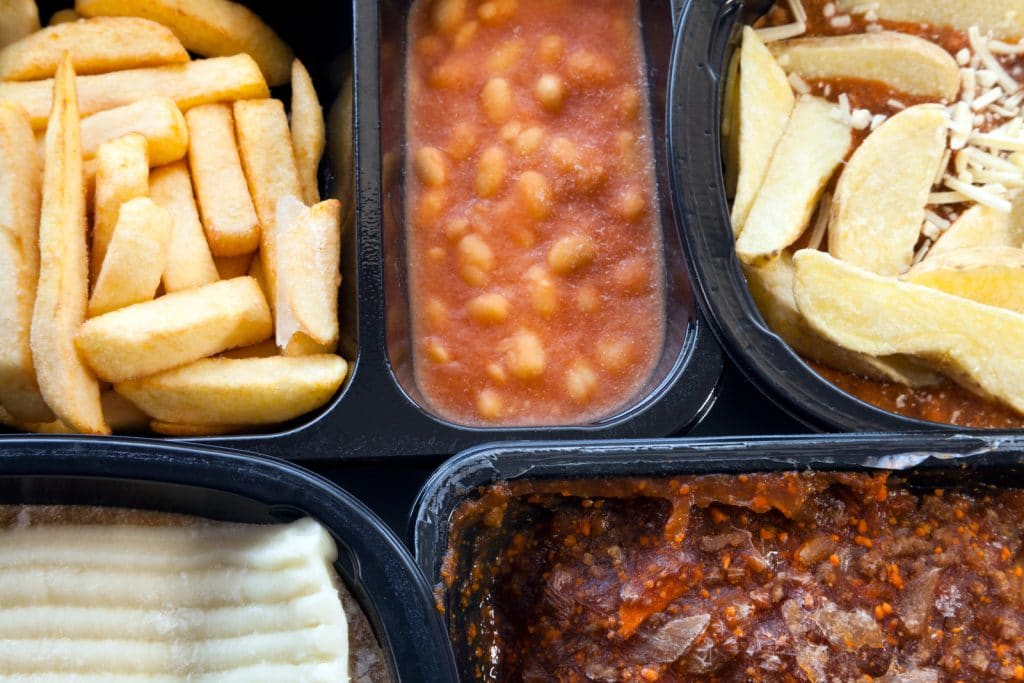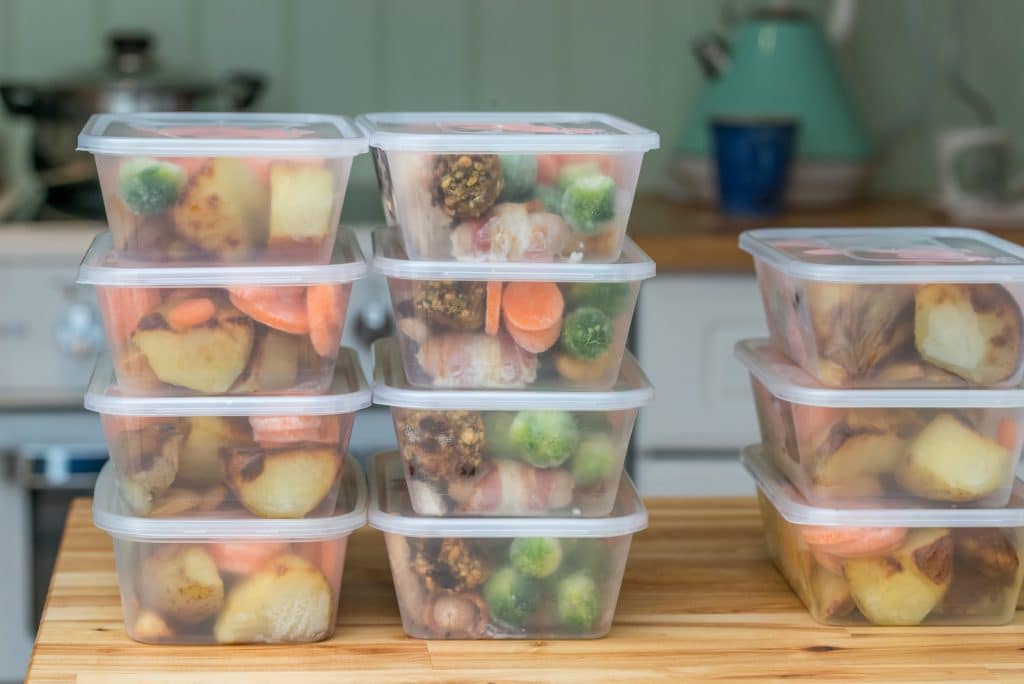[Article updated on 19/09/2023]
Who has never given in to the temptation of a frozen meal, with a more than acceptable taste, ready in less than 10 minutes (if not 5), after a busy and stressful day or simply due to lack of time?
Prepared meals, and more generally processed products, appeared in France, for the general public, in the 70s and 80s, and gradually revolutionized the daily lives of millions of French people. They have many advantages, but the main one is the time saving they provide for households. The majority of households now have two people working full time, and like household appliances, the appearance of these transformed products will become a true symbol of modernity.
More than 40 years later, processed products are well known to the general public, and their consumption has exploded, but the image we have of them has also greatly evolved. Numerous studies have been carried out during this period of time and have now made us aware that increased consumption of such products could have harmful consequences for the health of consumers (diabetes, excess weight, cardiovascular diseases, intestinal dysbiosis, etc.) . Too fatty, too sweet, too salty, a large source of additives aimed at improving organoleptic or conservation qualities, these products, characterized by their hyper-palatability, are not popular with the medical profession.
So how can we get rid of it? Here are some answers that can inspire us on a daily basis.
Everyday solutions
A processed (or ultra-processed) product is generally characterized by the presence of at least 5 ingredients which will be assembled, or reconstituted through one or more industrial processes. At the opposite end of the spectrum from these products, we find by definition raw products, that is to say unprocessed products which generally contain less than 5 ingredients (fruits, vegetables, fish, meat, seeds, cereals, etc.).
The most obvious solution to limit the consumption of processed products therefore consists of encouraging the purchase of raw products, and transforming and assembling them yourself while cooking. One of the major obstacles put forward is the time-consuming aspect of cooking, and it is certain that not every household has the same amount of daily time to cook.
One of the easiest ways to save time is to choose a slot in your week to cook meals in advance. In fact, it is easier to find a slot of 2 to 3 consecutive hours over the course of a week rather than 30 to 60 minutes per day.
The vast majority of recipes can be frozen, which will allow you to have the “prepared dish” effect on a daily basis by only having to defrost a previously cooked recipe, in the space of 5 minutes, while avoiding the negative impacts of processed products. These “cooking in advance” moments are also an opportunity to cook in larger quantities than usual, always with the aim of saving time.
There are also a plethora of diverse and varied recipe books, and it is now even more common to look for new recipes directly on the internet through specialized sites, blogs or YouTube videos. Enough to renew yourself regularly and try new foods that you don’t instinctively think of.
Added to this is an alternative which is tending to become more popular in homes: simmer-cooker robots. It seems important to us to dispel a now well-established myth: no, not all of them are as expensive as high-end robots such as the Thermomix. Indeed, a simple multi-cooker (Cookeo, Cook4Me, or CookAtHome etc.) which allows you to make recipes from raw products, is now sold for less than €200. These household appliances represent a lasting investment and allow considerable time savings on a daily basis. Here again a very wide choice of recipes is available directly on the internet for each of these devices.
Widespread awareness
However, the solutions mentioned above do not alone make it possible to guide the consumer in the choice of their products.
Over the last few years, we have seen a real desire appear on the part of many health stakeholders to stem this phenomenon and ensure that the health of consumers can be preserved in future years.
The High Council for Public Health (HCSP) has in fact added to its objectives to be achieved by 2022, that of lowering the total consumption of processed and ultra-processed products by 20% compared to the average consumption in France in 2019 An ambitious objective which highlights major projects carried out by numerous research teams, in France and around the world, as well as the development of innovative tools.
The most evocative tool regarding processed products is the NOVA classification. This classification is the result of several years of research carried out by Brazilian teams in the early 2000s. It was in 2009 that a first presentation of this tool was made, bringing an innovative idea, that of classifying foods into 4 categories ranging from 1 to 4 (like the French Nutri-Score for example), group 1 corresponding to minimally or unprocessed foods, and group 4 to ultra-processed foods.
This classification is now recognized worldwide, but its use is not yet completely widespread. Website OpenFoodFact, a major player in collaborative referencing of products marketed throughout the world, has chosen to integrate this NOVA score on its platform since the beginning of 2021. But the use of this classification is not yet democratized, and even less imposed. There is no doubt that this practice will evolve in the years to come, like the Nutri-Score mentioned previously which is found more and more frequently on the packaging of industrial products even though no obligation to affix it exists. this day.
In the meantime, there is a simple trick when we are stocking up, it is advisable to stop for a while on the list of ingredients, in order to do, as mentioned previously, a quick count, and if the total number of ingredients is greater than 5, it is very often a food which has undergone numerous transformation processes.
We will conclude, as is often the case, by quoting Paracelsus: “everything is poison, nothing is poison, it is the dose that makes the poison”. Let’s keep in mind that these products can be an integral part of a varied, balanced and pleasant diet, let’s just avoid using them daily.


